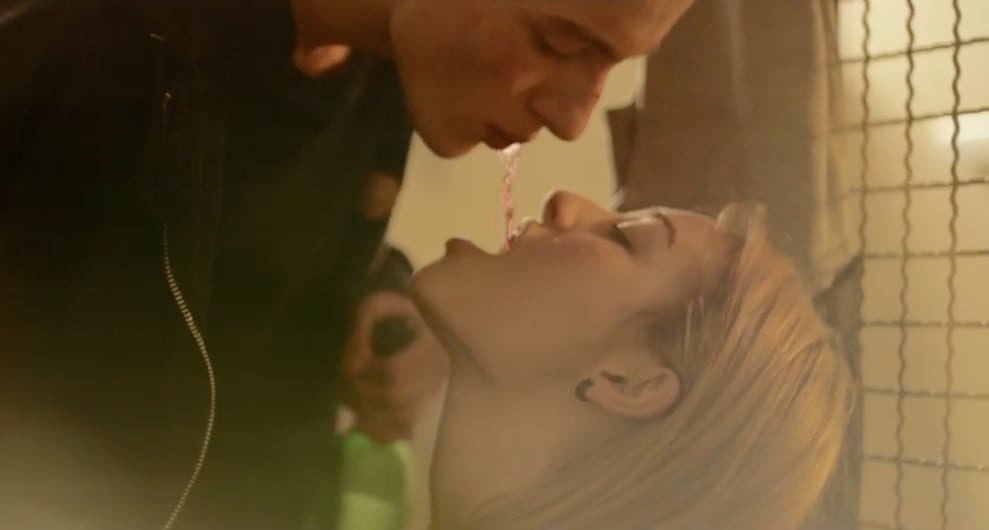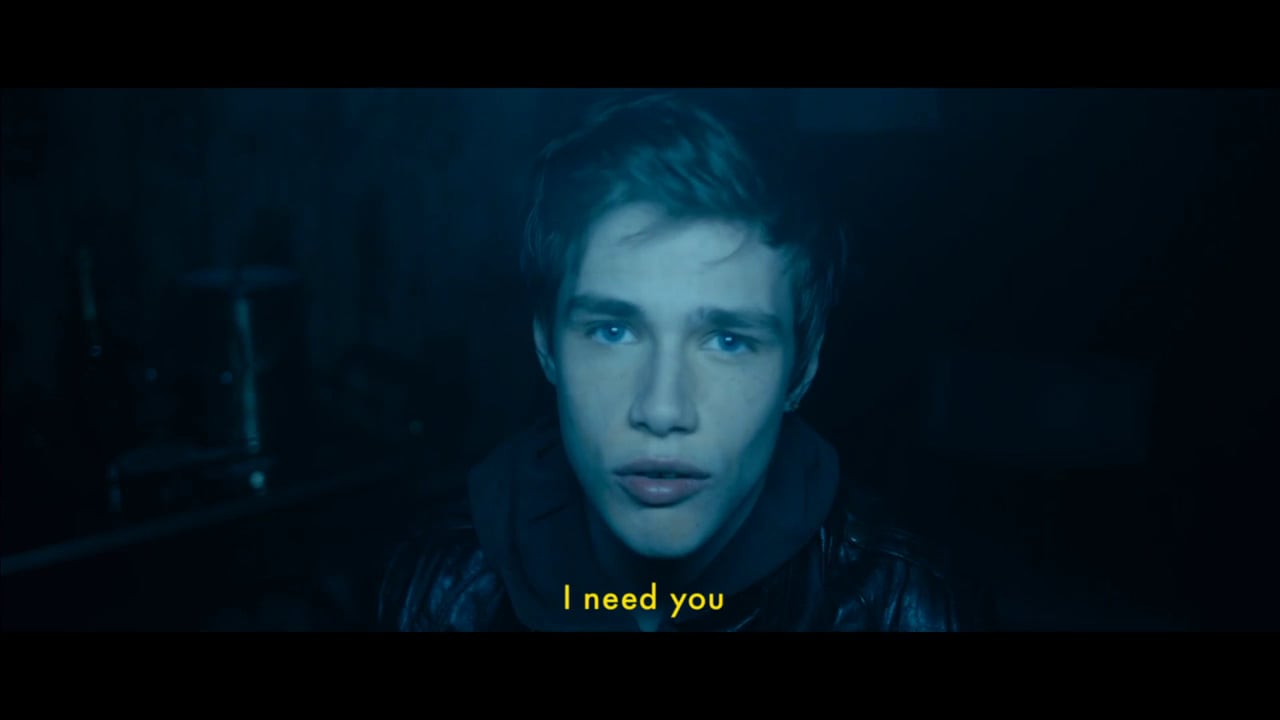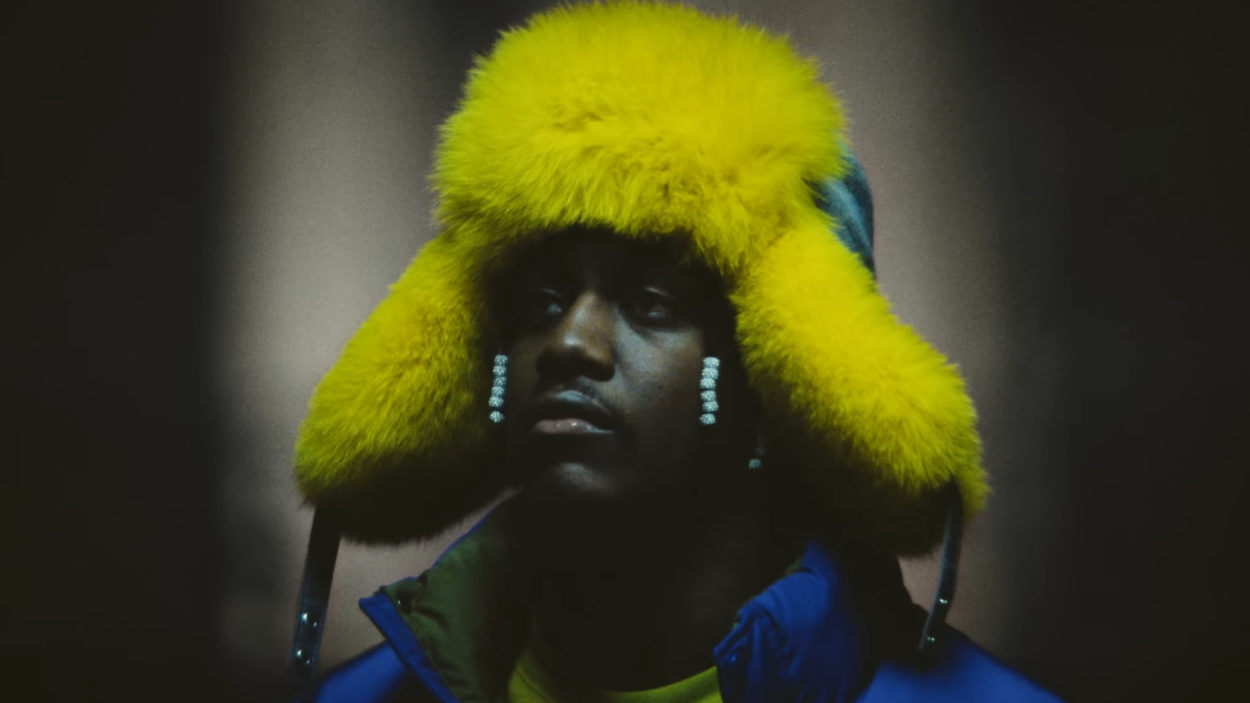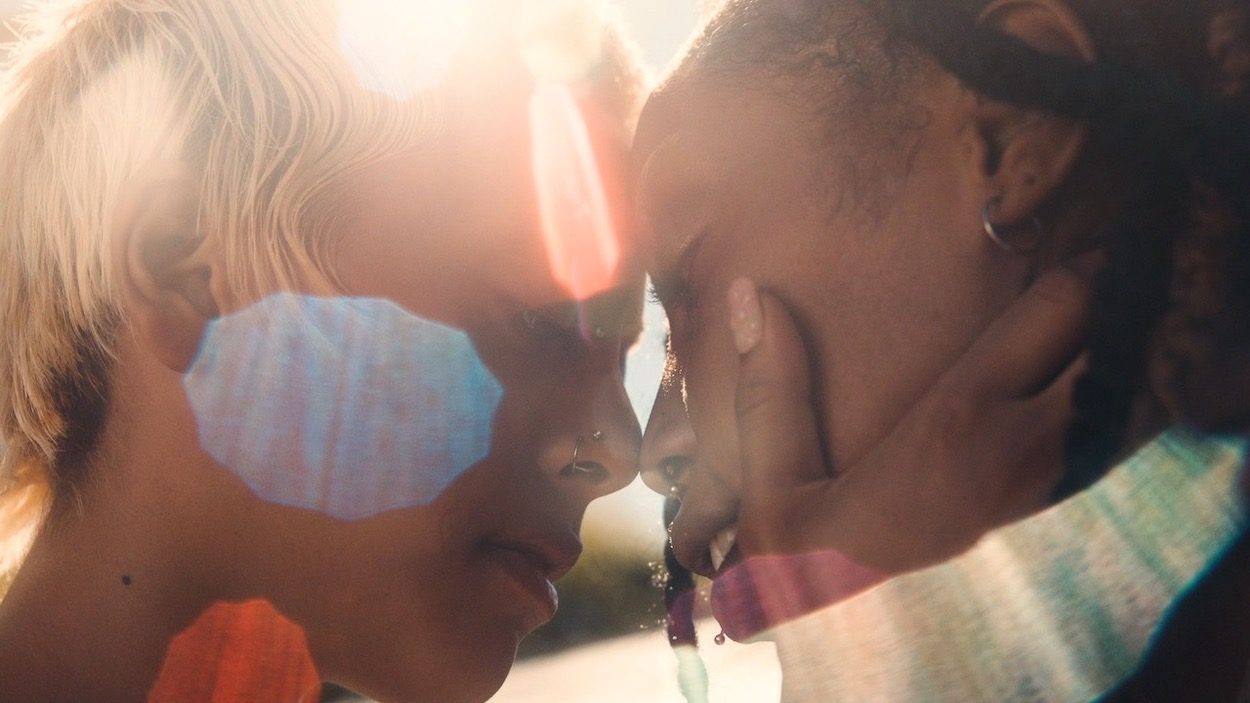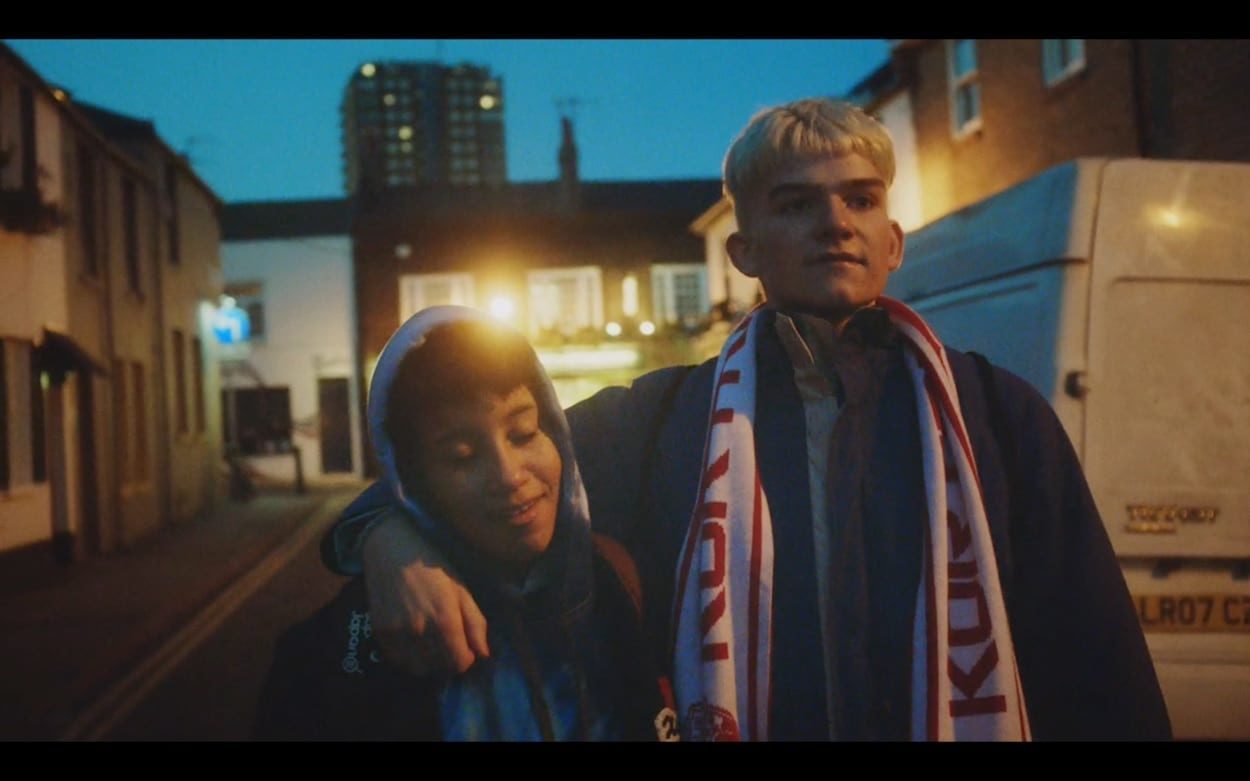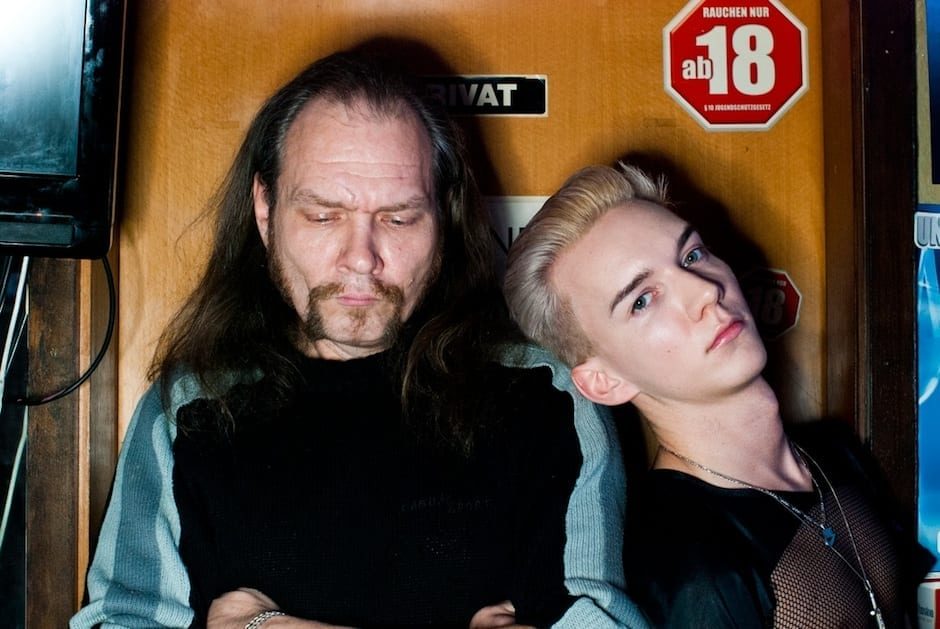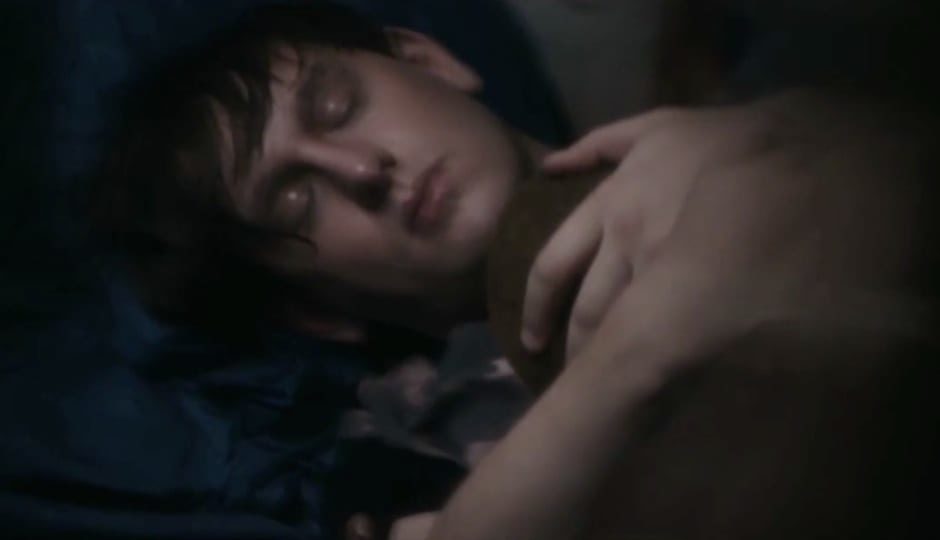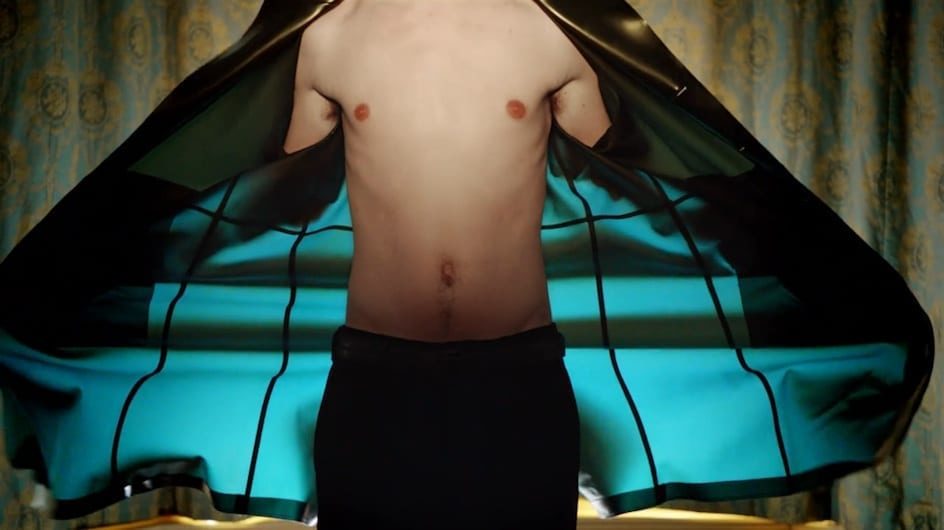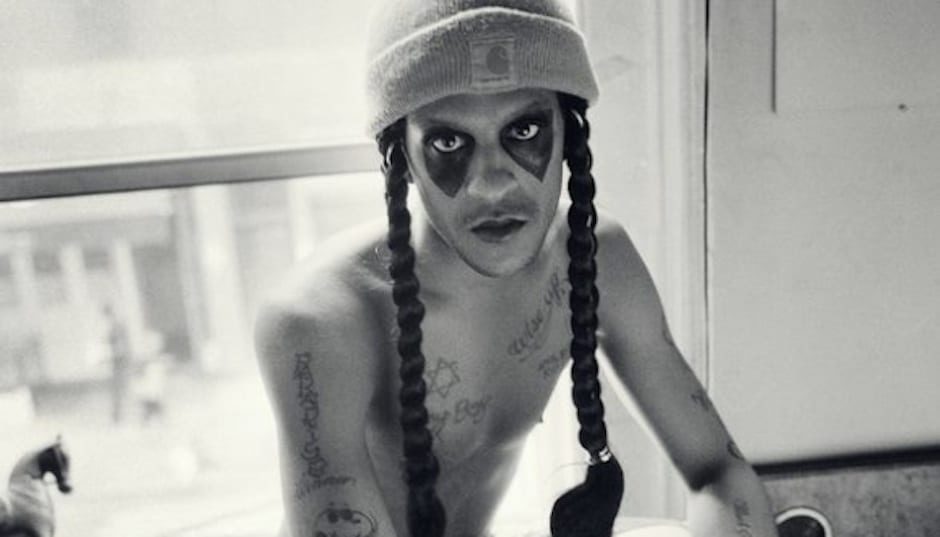You’re comfortable exploring gay sex relationships in your films and now your narratives for your two latest films, Die Alphatier Trilogie and Habitat for Austra (see in Related Content) are dealing with desire and needs between any gender. What’s behind your decision to shift your focus?
I’d dealt quite a lot with sexuality that was ‘slightly more traditional for the screen’ in earlier work. I don’t really feel the stories were ‘gay stories’, but rather stories that explored sexuality and intimacy. The ‘gayness’ of the characters was never meant to be the focus as I was aiming for emotion and relationships that transcended sexual orientation. None of my characters have ever defined their sexuality, but rather operate within different layers of ambiguity or fluidity of situation. With my recent video for Austra, I attempted to present three different types of sexual relationships with equal humanity and fragility in the hope of suggesting a unity to the human experience despite its relative surface variables.
Please tell us about developing the narrative for Die Alphatier Trilogie – what triggered the idea and did the film turn out as you storyboarded it?
I was approached by one of the biggest rock legends in Germany, Marius Müller-Westernhagen, to bring some of the raw, youthful qualities I’d brought in films like WAR and HEILE GÄNSJE. He wanted to create something that felt fresh and atypical to the type of videos that would be expected from him. I presented scripts and we kept an open dialogue off and on for a few months until we nailed down something we both felt good about.
The film’s narrative is built around quite an Oedipal structure and plays with the cultural rifts that exist between generations in the East of Germany who are fundamentally wired differently and the struggles they have to communicate and co-exist.
I no longer storyboard, but do block scenes out quite heavily. On this project, we shot rehearsals and went to locations with cast and team to talk about scenes. My DOP, Mathias Schöningh, knew the narrative inside and out and we could fluidly restructure and re-work moments as we shot.
Are we right in thinking that a lot of your projects are direct collaborations with the artists you shoot for? What is it about this process that appeals to you as compared with the usual agency / commissioner hierarchy?
This is almost exclusively how I’ve been working these days. I’ve been creating projects collaboratively for most of my career, from my time working in design and animation studios to my work as head of video for Bare Bones. From my general experience I’ve found that the level of creative development and collaboration is always stronger and more dynamic when it’s directly between one artist and another. Building ideas and worlds and characters from the ground up with artists rather than responding to briefs has lead to projects that everyone is consistently happy with by the time we’re at the final cut. This trust in the early stages also allows for a free flow of ideas to be thrown around rather than operating under a pre-defined set of parameters or expectations.
How far would it be fair to say there’s a cathartic or confessional impulse in a lot of your work? Or rather, how far are the emotions you explore drawn from your own adolescence and growth, albeit transposed into difference social or sexual situations?
The confessional, introspective and therapeutic qualities of my work has been THE factor in the evolution of my work over the last two years. Almost every film revisits and deconstructs actual events from my childhood or more abstractly fear, fantasy, anxieties and confusion. There’s a demystification that occurs when you look inside the inner-workings and recreate those things that terrify, arouse and mystify.
There is also a fraternal or maternal bond that exists with the people I shoot as we deconstruct their present selves in hope of getting to their core which ultimately leads to a confidence and more refined form of expression.
Casting is so crucial to your work – do you have a kind of checklist in your head when you go into a casting or are you generally looking to find that connection with the talent that you can translate onto the screen?
In the last 3-4 years I’m into characters in the late teens to early twenties and ones over 70 or so. There’s a beauty in fragility of coming-of-age as well as the absolute confidence, wisdom and humility that comes with age. I tend to be attracted to characters who are more introspective than most and have the energy and desire to dig deep within themselves. It’s most exciting when it’s clear that there is a an actual emotional growth that might occur during the production of a project.
